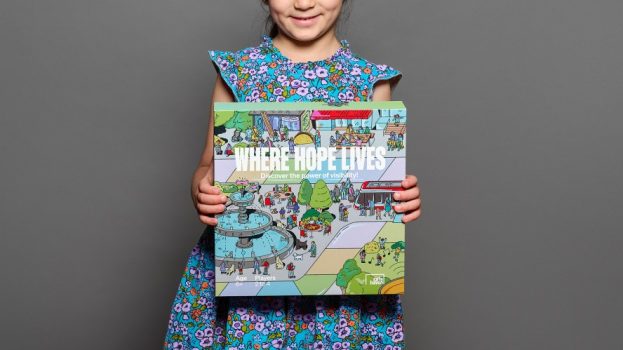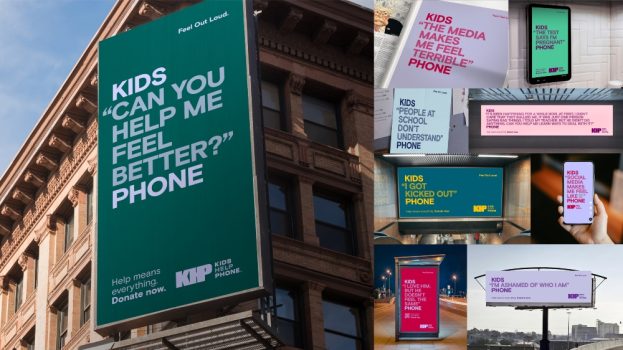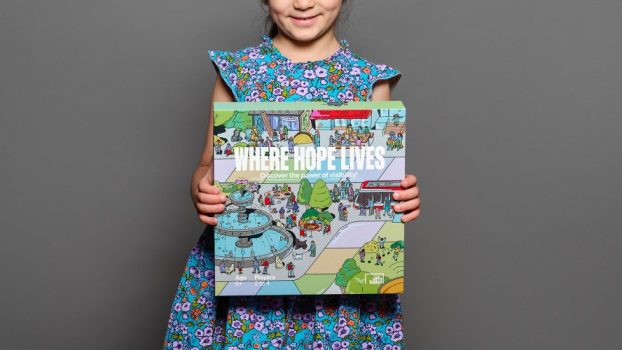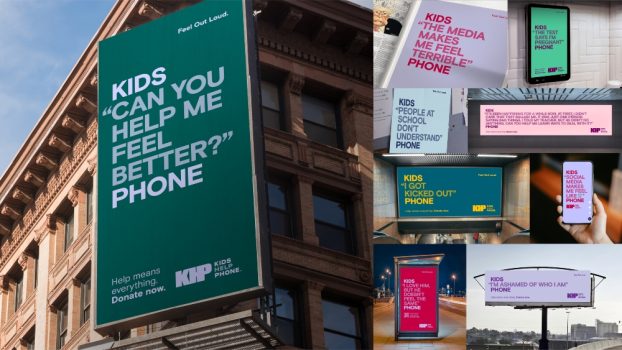By Kristyn Anthony
Just 24 hours after Ryan Hughes, senior director of strategy at The T1 Agency, pitched a draft for a project with Heart & Stroke, his own father suffered a stroke.
It’s a familiar story: heart disease is the second leading cause of death in Canada, where a loved one is lost every five minutes.
In an instant, the work became personal. For more than 60 years, Heart & Stroke has drawn awareness to heart disease so that people like Hughes’ father know the warning signs. “You’re saving lives and we were able to tangibly see that,” he told the foundation. “The work you guys have been doing for years just saved my dad’s life.”
“The overall message is time,” adds Carolyn Shaw, creative director at T1, about the work, pointing to that bleak five minute statistic. “Time and how fast you get them to the hospital is a big factor in being able to save someone.”
Until April 5, passerby will be hard pressed not to notice the digital words flashing from a wall of clocks along the York Concourse at Toronto’s Union Station. T1’s experiential activation is meant to garner momentum in support of the 2019 Manulife Heart & Stroke Ride for Heart on June 2.
Aunt. Mom. Son. Spouse. The names displayed on the clocks represent all the relationships heart disease impacts as they rotate through the installation, at once there and then gone in an instant. From a distance, curiosity is sparked, pulling 300,000 daily Union Station commuters closer. “I think that’s a very powerful journey for someone to go through,” Hughes says. “It’s all about making this human connection.”
Heart disease affects people of all ages and genders, but typically an older demographic participates in the ride and drives the bulk of donations, says Mark Pullen, Ride for Heart campaign manager. Younger generations don’t have as much disposable income, and the way people are giving has changed to include a digital component. “Over the last couple of years, the fundraising landscape has been challenging for a lot of nonprofits,” Pullen notes.
Beyond donations, the organization has also not been reaching people in their 20s and 30s when it comes to its marketing as well. The new project pushed Heart and Stroke outside its comfort zone, scrapping more traditional marketing strategies to keep the messaging fresh as the event celebrates its 32nd year, with an experiential activation that lends itself to motivating digital- and social-led storytelling. With a mobile LED screen, the foundation was able to modernize its best kept secret – word of mouth advertising.
“It’s funny how something like this can inspire people to share their stories and in this age of social media, it’s stories that provide those connections,” Pullen says.
























